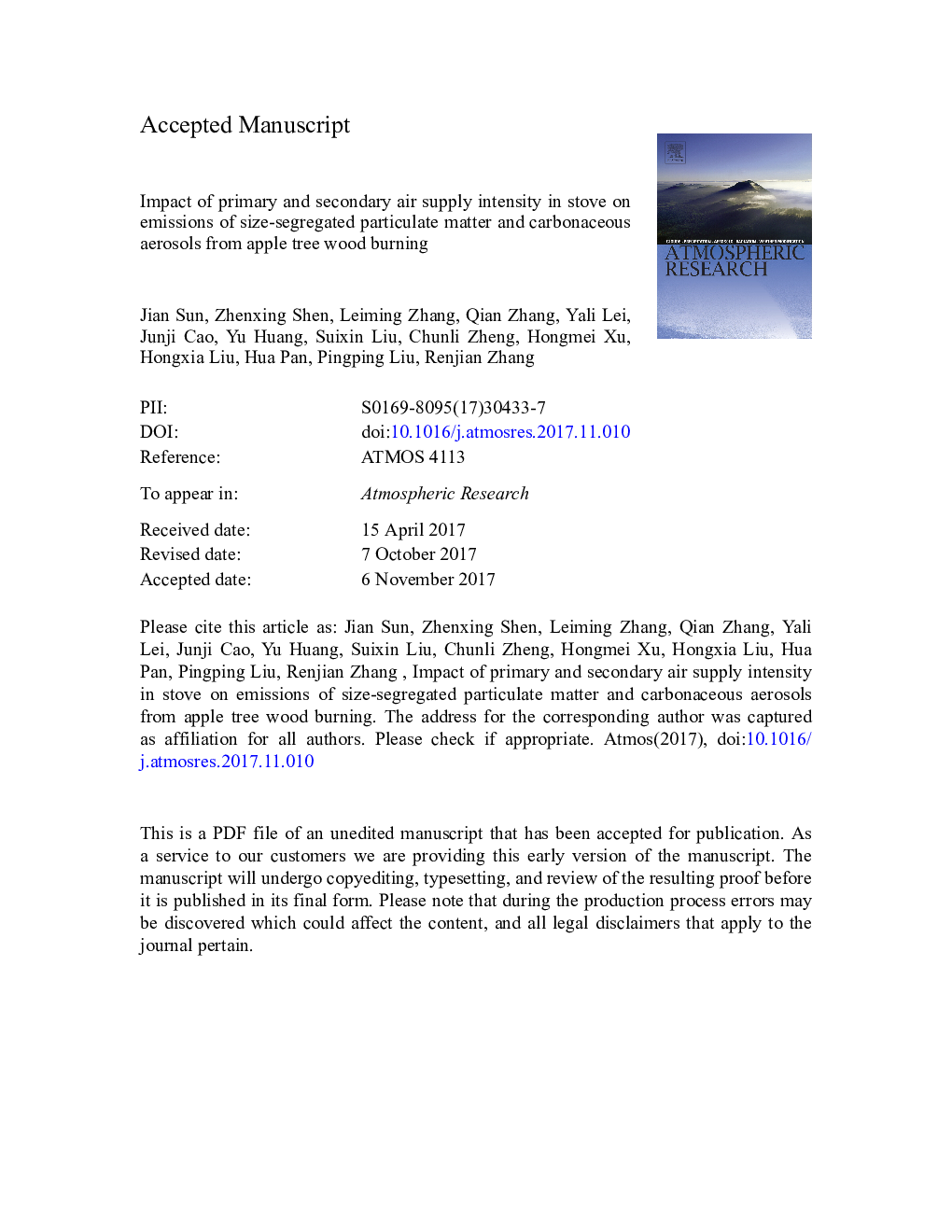| Article ID | Journal | Published Year | Pages | File Type |
|---|---|---|---|---|
| 8864789 | Atmospheric Research | 2018 | 30 Pages |
Abstract
In order to assess emission factors (EF) more accurately from household biomass burning, a series of laboratory-controlled apple tree wood burning tests were conducted to measure the EFs of size-segregated particulate matter (PM) and carbonaceous aerosols. The controlled burning experiments were conducted with designed primary air (PA) and secondary air (SA) supply intensity. An optimum value of 7 m3·hâ 1 was found for SA, resulting the highest modified combustion efficiency (92.4 ± 2.5%) as well as the lowest EFs of PM2.5 (0.13 ± 0.01 g·MJâ 1), OC (0.04 ± 0.03 g·MJâ 1) and EC (0.03 ± 0.01 g·MJâ 1). SA values of 7 and 10 m3·hâ 1 resulted the lowest EFs for all the different PM sizes. In a test with PA of 6 m3·hâ 1 and SA of 7 m3·hâ 1, very low EFs were observed for OC1 (8.2%), OC2 (11.2%) and especially OP (Pyrolyzed OC) (0%, not detected), indicating nearly complete combustion under this air supply condition. Besides SA, higher PA was proved to have positive effects on PM and carbonaceous fraction emission reduction. For example, with a fixed SA of 1.5 m3·hâ 1, EFs of PM2.5 decreased from 0.64 to 0.27 g·MJâ 1 when PA increased from 6 to 15 m3·hâ 1 (P < 0.05). Similar reductions were also observed in EFs of OC, EC and size segregated PM.
Related Topics
Physical Sciences and Engineering
Earth and Planetary Sciences
Atmospheric Science
Authors
Jian Sun, Zhenxing Shen, Leiming Zhang, Qian Zhang, Yali Lei, Junji Cao, Yu Huang, Suixin Liu, Chunli Zheng, Hongmei Xu, Hongxia Liu, Hua Pan, Pingping Liu, Renjian Zhang,
